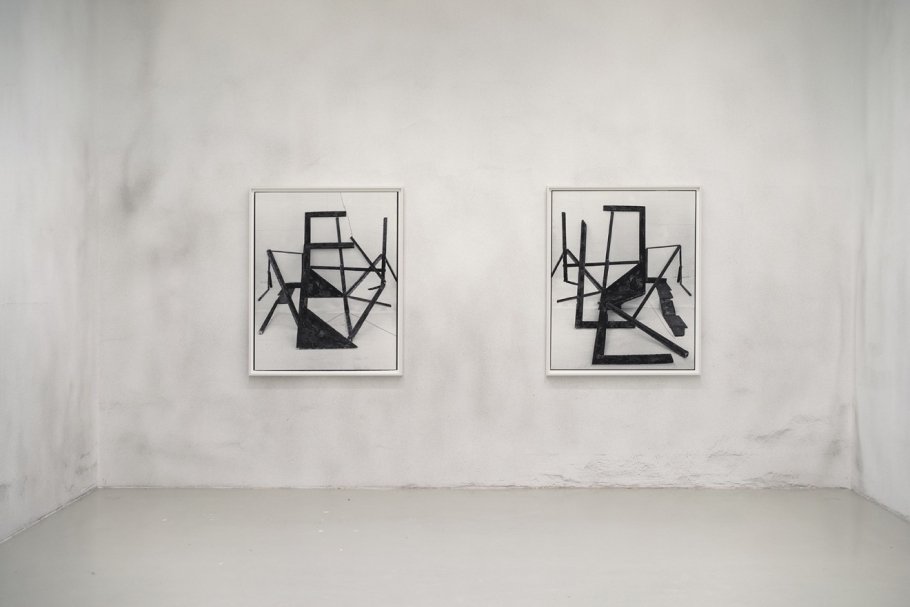Rodrigo Valenzuela

Galerie Lisa Kandlhofer
Brucknerstraße 4, 1040 Wien
Österreich
Di. - Fr. 11 bis 19 Uhr | Sa 11 bis 16 Uhr
Galerie Lisa Kandlhofer freut sich, die Einzelausstellung „AMERICAN TYPE“ von Rodrigo Valenzuela präsentieren zu dürfen.
In his photographic series Valenzuela challenges American culture and a simplified approach to representation by revealing his labor-intensive process of translating spaces and objects into images. The title American Type refers to an essay by Clement Greenberg. Greenberg put Abstract Ex- pressionist artists like Jackson Pollock and Franz Kline on the international map by famously identi- fying a distinctly American characteristic in Post-war art. Greenberg argued that painting was about the act of painting rather than a complex idea of representation. Following WWII America was fast becoming a great power in the world, one that could impose itself on anything. This perception of American power is for Valenzuela still very relevant today. In this work he points to the flaws in this approach to representation. Questioning what it is about American culture that wants to create something that is devoid of content. As a culture why do we want things to be strai- ght forward, lacking in subtext and complex critical thinking? Being a cultural worker in America, Valenzuela feels it is his responsibility to push this conversation forward. Everything visible in the final image was created by hand. Carefully crafted sculpturalelements of plaster and graphite are structural forms when photographed, though then appear to exist on a two-dimensional plane and resemble Abstract Expressionist brush strokes. Works from both series Sense of Place and New Land are presented in the second half of the ex- hibition. Each painting starts as a medium-format film negative of the deserts of California and Chi- le. Valenzuela scans the film negative and prints the images on to large-scale xerox, this print is subsequently transferred on to canvas. He then builds the layers through removal of the paper, painting with acrylic and chalk. Valenzuela's constructed scenes and narratives recognize the tensions between individuals and societies in relation to where they reside, most of the work focuses on the experiences of undocu- mented immigrants and laborers. He is considering the ideology of the 'Manifest Destiny' a nineteenth century belief that the white European is inherently superior, and that North America was their fortune to conquer. This ideology lead to Act's being passed like the 'Homestead Acts' which was created to quicken the settlement of public land west of the Mississippi river, an act infamous due to its failings. Valenzuela's images of barren desert landscapes, the iconographic American West, invoke ideas of both expansion and opportunity. Though they also represent painful histories of erasure that reso- nates with present-day debates on immigration, border control, gentrification and climate change. Furthermore references to architecture and interior spaces are superimposed on the landscapes, taking the form of lines and boxes that the artist describes as "transition zones" and "structures built out of desire." The video work Tertiary is a meditation on the presence of minorities in cinema. It discusses both the sociological impact of the lack of representation of minorities in cinema as well as revealing the failings of camera technology in relation to the skin tones of these groups. The failings of the came- ra are revealed through its inability to recognize faces, to not focus correctly. This creation of auto- nomy in the camera acts as a metaphor by privileging those of lighter skin whilst all discuss ideas of power, agency and privilege. Rodrigo Valenzuela (b. 1982, Santiago, Chile) who lives and works in Los Angeles, is an assistant professor in the Department of Art at the UCLA.
